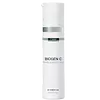What's inside
What's inside
 Key Ingredients
Key Ingredients

 Benefits
Benefits

 Concerns
Concerns

 Ingredients Side-by-side
Ingredients Side-by-side

Water
Skin ConditioningStearic Acid
CleansingOleic Acid
EmollientGlycerin
HumectantDimethyl Isosorbide
Solvent3-O-Ethyl Ascorbic Acid
Skin ConditioningKrameria Triandra Root Extract
Skin ConditioningGlycine Soja Oil
EmollientCarthamus Tinctorius Seed Oil
MaskingPolyglyceryl-6 Distearate
EmulsifyingTocopheryl Acetate
AntioxidantGlyceryl Stearate Citrate
EmollientPolyglyceryl-3 Stearate
EmulsifyingEucalyptus Globulus Leaf Oil
PerfumingHydrogenated Lecithin
EmulsifyingHexapeptide-11
Skin ConditioningLaminaria Digitata Extract
Skin ProtectingJojoba Esters
EmollientPolyglyceryl-3 Beeswax
EmulsifyingCetyl Alcohol
EmollientChloroxylenol
AntimicrobialCI 42090
Cosmetic ColorantLimonene
PerfumingWater, Stearic Acid, Oleic Acid, Glycerin, Dimethyl Isosorbide, 3-O-Ethyl Ascorbic Acid, Krameria Triandra Root Extract, Glycine Soja Oil, Carthamus Tinctorius Seed Oil, Polyglyceryl-6 Distearate, Tocopheryl Acetate, Glyceryl Stearate Citrate, Polyglyceryl-3 Stearate, Eucalyptus Globulus Leaf Oil, Hydrogenated Lecithin, Hexapeptide-11, Laminaria Digitata Extract, Jojoba Esters, Polyglyceryl-3 Beeswax, Cetyl Alcohol, Chloroxylenol, CI 42090, Limonene
Water
Skin ConditioningGlycerin
HumectantSodium Hyaluronate
HumectantGardenia Florida Fruit Extract
Skin ConditioningSambucus Nigra Flower Extract
RefreshingTanacetum Annuum Flower Oil
MaskingMaltodextrin
AbsorbentUndaria Pinnatifida Extract
Skin ConditioningXanthan Gum
EmulsifyingCitric Acid
BufferingSodium Citrate
BufferingBenzyl Alcohol
PerfumingDehydroacetic Acid
PreservativePotassium Sorbate
PreservativeSodium Benzoate
MaskingLimonene
PerfumingIngredients Explained
These ingredients are found in both products.
Ingredients higher up in an ingredient list are typically present in a larger amount.
Glycerin is already naturally found in your skin. It helps moisturize and protect your skin.
A study from 2016 found glycerin to be more effective as a humectant than AHAs and hyaluronic acid.
As a humectant, it helps the skin stay hydrated by pulling moisture to your skin. The low molecular weight of glycerin allows it to pull moisture into the deeper layers of your skin.
Hydrated skin improves your skin barrier; Your skin barrier helps protect against irritants and bacteria.
Glycerin has also been found to have antimicrobial and antiviral properties. Due to these properties, glycerin is often used in wound and burn treatments.
In cosmetics, glycerin is usually derived from plants such as soybean or palm. However, it can also be sourced from animals, such as tallow or animal fat.
This ingredient is organic, colorless, odorless, and non-toxic.
Glycerin is the name for this ingredient in American English. British English uses Glycerol/Glycerine.
Learn more about GlycerinLimonene is a fragrance that adds scent and taste to a formulation.
It's found in the peel oil of citrus fruits and other plants such as lavender and eucalyptus. The scent of limonene is generally described as "sweet citrus".
Limonene acts as an antioxidant, meaning it helps neutralize free radicals.
When exposed to air, oxidized limonene may sensitize the skin. Because of this, limonene is often avoided by people with sensitive skin.
The term 'fragrance' is not regulated in many countries. In many cases, it is up to the brand to define this term. For instance, many brands choose to label themselves as "fragrance-free" because they are not using synthetic fragrances. However, their products may still contain ingredients such as essential oils that are considered a fragrance.
Learn more about LimoneneWater. It's the most common cosmetic ingredient of all. You'll usually see it at the top of ingredient lists, meaning that it makes up the largest part of the product.
So why is it so popular? Water most often acts as a solvent - this means that it helps dissolve other ingredients into the formulation.
You'll also recognize water as that liquid we all need to stay alive. If you see this, drink a glass of water. Stay hydrated!
Learn more about Water